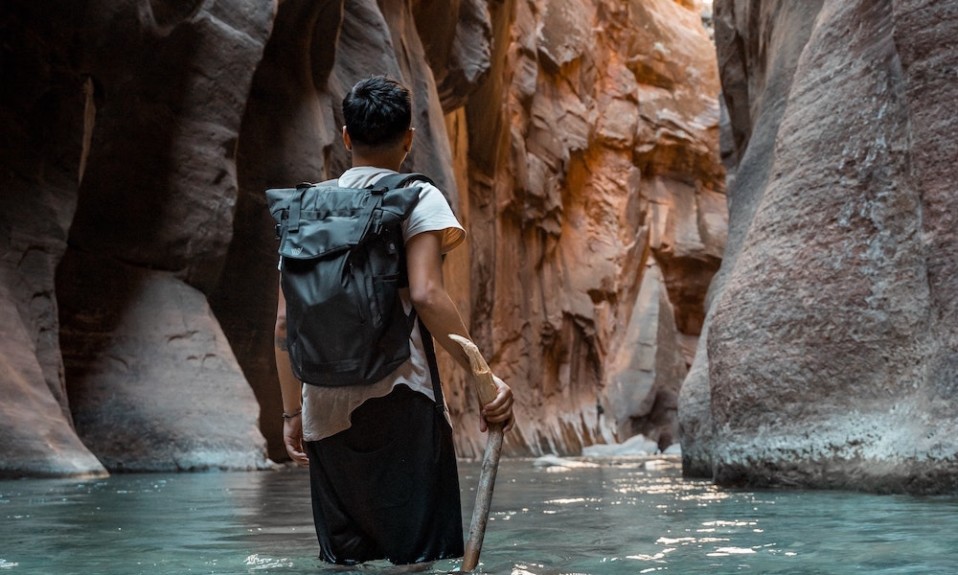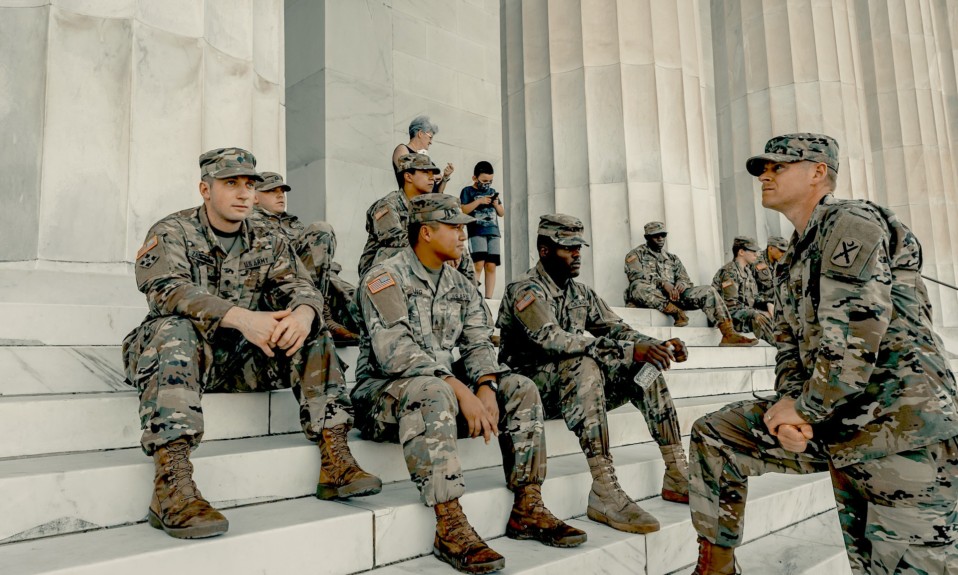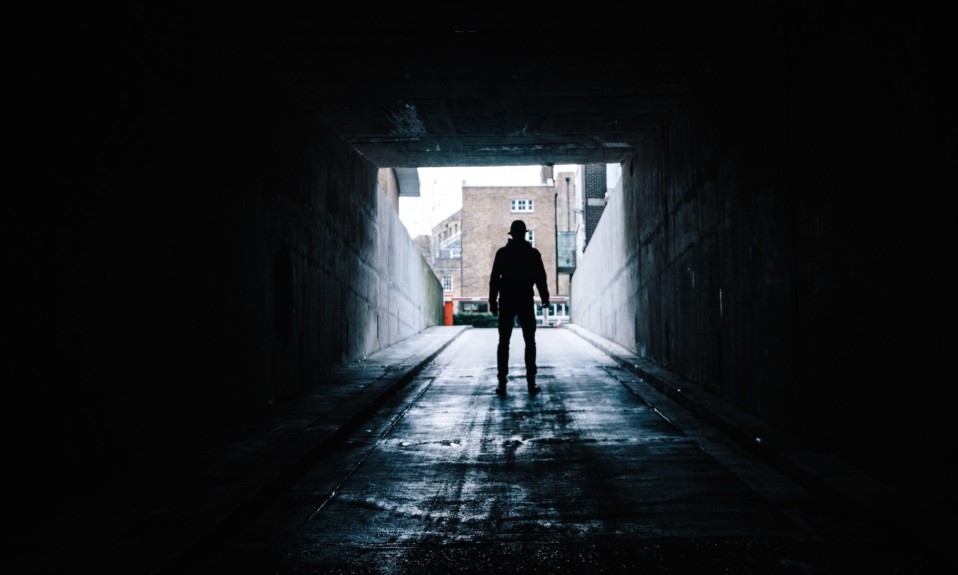Several figures have been working to put the shine back on outdoor addiction recovery programs
By Jennifer Taylor
The extended hikes Gil Hallows took through mountains, canyons and wild, uninhabited nature were transformational. It’s where he found peace, healing and meaning. So it shouldn’t be surprising that an accidental encounter with a wilderness program group while hiking in the mountains near his childhood home of Loa, Utah, nearly three decades ago changed the trajectory of his life. The chance meeting was cause for him to scout out such programs. Not long after, he left his teaching job at a small college in Kansas to become assistant director of a wilderness therapy program.
“It brings together my love for nature, my love working with youth, and … teaching, guiding and mentoring,” he says of wilderness therapy.
I get pictures, graduation cards and notes from alumni who graduated 25 years ago saying, ‘This is what I have done with my life. Thank you for the gift of journey [and] of discovery you provided to me.’ That’s why I keep doing this.”—Gil Hallows, executive director of Legacy Outdoor Adventures and founding member of the Outdoor Behavioral Healthcare Council
The “hero’s journey” is a common storytelling structure that involves a protagonist who goes on an adventure, triumphs in a decisive crisis and returns home changed or transformed. It’s something Hallows both invokes in his work and has experienced personally. The hero, he says, is seeking something but does not know exactly what. Through the challenges of the journey, the hero discovers that what is being sought is actually inside of oneself.
“The wilderness is a great place to provide that kind of journey of self-discovery,” Hallows says. His own came when he realized that something was missing in his life. That’s when helping others through wilderness therapy became his calling.
Wilderness Therapy’s Checkered History
Hallows’ journey into the field was tested in its first year—1995—when a bombshell investigative story published in Outside by Jon Krakauer, then a contributing editor at the magazine, spotlighted a trail of horrors in the early, unregulated days of adventure therapy. Krakauer’s story, which documented the deaths of four teens, helped root out bad operators in the wilderness therapy field. But it also left reputable leaders stunned by the growing negative perception of their industry nationwide.
“The majority of the population of this country knew so little about wilderness therapy that their perception of it was formed by that article and other [articles] that came out at that time,” Hallows says.
Krakauer’s story portrayed wilderness therapy as negligent when it came to managing risk. Some subsequent articles that came out at the time equated wilderness therapy with militaristic “boot camps,” which “are so totally different from each other,” Hallows says. “Equating them in the same paragraph did a great disservice to wilderness therapy.”
Michael Gass, Ph.D., LMFT and a professor and director of the Outdoor Behavioral Healthcare Center at the University of New Hampshire, recalls that in the late ’80s, a lot of “adventure therapy” programs were flooding the market. Some of them were good, he says, but there were some “that were just negligent.”
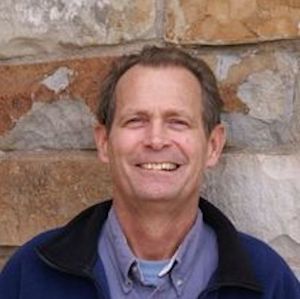
Complicating matters was that every bad event in a wilderness program became front page news in publications such as The Salt Lake Tribune. (Utah, with its vast open spaces, is the base for many outdoor therapy programs.) Then on the anniversary of that event, it would be brought up again, says Hallows. “There was this general negative perception of wilderness therapy,” he says.
In 1996, Hallows was working at the Aspen Achievement Academy in Loa, which provided wilderness therapy treatment to at-risk adolescents age 13 to 17. The Krakauer story sparked the formation that year of the Outdoor Behavioral Healthcare Council, a trade organization made up of about a half-dozen leaders from wilderness therapy programs, including Hallows. They assembled in Salt Lake City to get to know each other and help redeem the field—realizing, Hallows says, that “we’re all in this together.”
The leaders came up with a three-pronged mission that committed to research demonstrating what works in outdoor therapy; sharing best practices around managing risk; and promoting effective treatment that allows leaders in the field to learn from each other.
The fallout from the teen deaths—a total of five from 1990 to 2003, The Salt Lake Tribune reports—was significant. At one point, Hallows says, Utah considered banning such programs altogether. But clinicians close to Hallows strongly objected, advocating for the modality and its effectiveness. The council determined that the field needed standards, and it collaborated with the state to create new licensing for outdoor therapy programs. Oversight, including background checks for staff and inspection protocols, became law. Other states followed suit with similar licensing standards.
Not long thereafter, the Outdoor Behavioral Healthcare Research Cooperative was created to fund research and pool data relating to wilderness therapy. Eventually the research component was folded into the Outdoor Behavioral Healthcare Center, under Gass’ direction. That foundational work led to the creation of a voluntary accreditation credential for outdoor healthcare providers, developed in tandem with the Association for Experiential Education to expand the AEE’s existing standards and better reflect wilderness therapy’s current practice. The result was a detailed set of ethical, risk management and treatment standards.
In March of this year The Salt Lake Tribune and KUER, Salt Lake’s public radio station, jointly released a database, intended to help parents assess teen treatment programs in the state, detailing the past five years’ worth of inspection reports and confirmed investigations for every residential treatment program operating in Utah.
The Outside article, it turns out, was the impetus to bring together leaders in the field and begin a spirit of collaboration.
“And so, yeah, it wasn’t all bad,” Hallows says.
Wilderness Therapy’s Path Back
For the past 25 years, the Outdoor Behavioral Healthcare Center has been working to bolster research and data collection in the field of wilderness therapy. The work is accessible to graduate- and Ph.D.-level researchers studying the effectiveness of the approach. The center’s research scientists are on the faculties of universities across the country, and the center’s website lists scores of studies related to wilderness therapy.
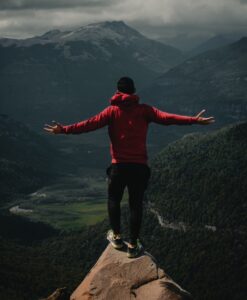
But despite more than two decades of research and collaboration on effective treatment and new laws, Hallows says the field is still combating the residual negative perception from the Outside article. He attributes that to people not understanding the benefits of outdoor therapy and the research conducted through the Outdoor Behavioral Health Center that finds therapy safe at programs accredited by OBH. (For wilderness therapy providers to earn accreditation from the OBH, the council requires that they conduct research and provide the results to the database. Only accredited providers are eligible to join the council.) Hallows says he hears regularly from families who have been positively impacted by their experience and from wilderness therapy guides who go on to careers in social services or the treatment field.
Even so, as recently as 2020, an article on wilderness therapy originally published in Undark highlighted critics of the practice who said there was a lack of scientific evidence showing that the approach works and who described the therapy as, at best, “an unproven experiment” with a high price tag. In the article, John Weisz, a professor of psychology at Harvard who specializes in mental health interventions for children and adolescents, says, “It’s hard to make a case for spending a lot of money on a program for which there is no strong evidence.”
Hallows says that view is “an indication of being uninformed or misinformed.”
One Teen’s Outdoor Journey to Recovery
In 2019, Albany, N.Y., native Justin Morehouse checked in to Back2Basics, an outdoor adventure recovery program based in Flagstaff, Ariz. He was 19, and it was his first time attending a treatment program. Morehouse had fond memories of camping and hiking as a child in the Adirondacks in upstate New York, but he says he lost touch with that through his addiction. Prodded by pending court cases and a supportive family, he decided to give outdoor therapy a shot.
The six-month residential treatment program followed by a separate six-month residential transition program was nothing short of a “miracle,” Morehouse says. He attributes part of his success in the program to being removed from his phone, computer, television and other everyday stressors. The outdoors, he adds, gives you a lot of time to think and process.
“It showed being in recovery and living healthy can be a lot of fun,” he says.
Back2Basics, run by founder Roy DuPrez, M.Ed., is accredited through the Joint Commission and is a member of the National Association of Therapeutic Schools and Programs. It includes a structured schedule of therapeutic counseling, 12-step meetings, community service and camping trips. Participants also have in-house educational opportunities in life skills, exercise and fitness, culinary programs that help secure future work in restaurants and hospitality, and the option to pursue undergraduate classes at Northern Arizona University or community college.
Now 21, Morehouse has been hired at Back2Basics as a behavioral health technician and recently completed his first week on the job. He’s more optimistic than ever.
“As long as I’m sober and doing the next right thing, [the future] is pretty open for me,” he says.
Nature is one of the biggest things that’s bigger than you. If you can connect to nature, the grandeur and the intensity of how big it is. It can create humility. And it can create a certain spirituality and a certain groundedness.”—Senadhi Parakrama, clinical director, Olympia House
Hallows says experiences like Morehouse’s keep wilderness therapy programs a viable option for individuals and families. They’re also why a growing number of traditional treatment centers are including outdoor experiences in their programs. For example, Olympia House in rural Sonoma County, Calif., provides a connection to the land for residential clients. Senadhi Parakrama, Psy.D., clinical director of the facility, recently told TreatmentMagazine.com: “Addiction is about the obsession—an obsession with self and an obsession with substance. If you’re going to break out, you have to connect to something bigger than you. Nature is one of the biggest things that’s bigger than you. If you can connect to nature, the grandeur and the intensity of how big it is, it can create humility. And it can create a certain spirituality and a certain groundedness.”
The positive stories seem to be breaking through, albeit at a “glacial pace,” says Hallows.
He’s got his own positive story. After Aspen Achievement Academy shuttered in 2011 amid a wave of outdoor therapy program closures caused by the recession—at the time it was Utah’s longest-running licensed wilderness therapy program—Hallows launched his own combined residential treatment center and wilderness therapy program, Legacy Outdoor Adventures, in Loa. Insurance companies are more apt to provide coverage if wilderness therapy programs offer a residential component.
The next step in his 68-year life journey is simply to stay the course. That comes in the form of more research and more contributions to the data on wilderness therapy. Specifically, Hallows says there’s a continued need to look at what aspects are most effective and for programs to learn from each other about risk management practices. On the ground at Legacy Outdoor Adventures, Hallows is working on securing more contracts with insurance companies to help reduce costs for families; expanding access to diverse populations on both the client and the employee sides; and growing the women’s program, Juniper Canyon Recovering Center for Women, which is in its fourth year.
But through the challenges of Hallows’ journey, he found his greatest source of gratitude when, just last week, he offered four alumni of the Legacy program jobs as field guides. When they first came to treatment, he says, they “struggled” and “didn’t know if they would make it.” But they did.
“I get pictures, graduation cards and notes from alumni who graduated 25 years ago saying, ‘This is what I have done with my life. Thank you for the gift of the journey [and] of discovery you provided to me,’” Hallows says. “That’s why I keep doing this.”
Top photo: Alex Azabache; bottom photo: Ramiro Pianaros


